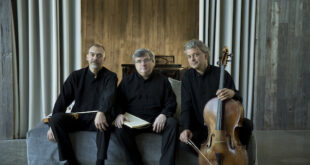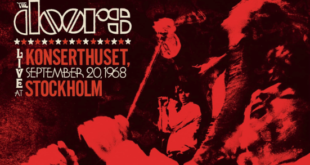
The 113th season of concerts at the Naumburg Bandshell in Central Park finished strong July 31 with an all-Vivaldi concert by the Orchestra of St. Luke’s. Introduced by media sponsor WQXR‘s Terrance McKnight, a small version of the orchestra whetted appetites with an exquisite performance of the concise Concerto for Strings in C Major (RV117); expanded horizons with the motet “In Furore Iustissimae Irae” featuring the wonderful soprano Sherezade Panthaki; and ushered the sun below the horizon with the composer’s most famous works, the four concerti collectively known as the Four Seasons.
The orchestra performed without a conductor, always an impressive feat even for last night’s reduced-personnel incarnation. Composed, for the occasion, of harpsichord and strings only (and not many at that, with just one bass viol, two cellos, two violas, and seven violins), it immediately established a finely balanced tone and transparent grace in the opening Allegro alla Francese movement of the Concerto in C Major. Angelic harmonies and a palpable sense of longing drove the Largo, and there was only just enough time to appreciate the easeful counterpoint in the songlike Allegro finale before it was over.
I don’t think I had ever before heard the motet “In Furore Iustissimae Irae.” I think I would have remembered, in particular, the original and incredibly beautiful melodies of the Largo. Soprano Sherezade Panthaki illuminates ancient music with bright clarity and a silvery tone. She sang Vivaldi’s music last night with even greater assurance than she brought to French music of the same early-18th-century period at a Four Nations Ensemble concert a few months ago. Here in the Vivaldi she asserted her mastery of dynamics throughout the three movements and one recitative.
She sang the opening movement’s sixteenth-note runs with ease, maintained a consistent, limpid tone through the slow section, and ended with a brilliant leap to a high note. The Largo’s ghostly juxtapositions of wide intervals and half-tone motifs require superb breath control, and she has it in spades; my companion remarked that Panthaki’s voice sounded just like another instrument in the orchestra, which is high praise in a piece like this. She made the final movement’s incredibly fast runs sound effortless.

The Four Seasons benefitted especially from the outdoor setting. A real bird sang during the twittering of the violins in the first movement of “Spring,” and a dog barked. The audience laughed in delight. During “Summer” real crickets formed a chorale as, in the music, a goatherd wept and a storm threatened. (McKnight’s amusing introductory readings evoked those last two images, accompanied by corresponding passages played by violin soloist and St. Luke’s concertmaster Krista Bennion Feeney.) The natural sensations extended to the visual as well. Real clouds mirrored the designs in the bandshell. When night had fully fallen and the orchestra descended into the icy depths of “Winter,” fireflies sparkled by the stage.
Happenstance aside, it’s revealing to hear this overly familiar music performed live amid the aural environment of the outdoors rather than in a concert hall, or worse, through stereo speakers. Recordings of pieces like the Four Seasons are often mastered to fill the room, or your headphones, with massive sound just shy of ear-busting. Such extreme presence can take away from the sheer loveliness of Vivaldi’s writing.
Indeed during quiet passages one had to lean in to hear some of the gentle accompaniments, as in the “Largo e pianissimo” of “Spring,” and even at times Feeney’s solo violin. And Feeney was marvelous, her playing as effervescent in the nimble solo passages of “Summer”‘s Presto as it was fluid in the beautiful lyricism of “Winter”‘s Largo. The violins sounded like flutes in “Autumn”‘s sleepy Adagio after an Allegro that began as a lighthearted dance before turning subtly yet dizzyingly dramatic. In the hunting scene of “Autumn”‘s finale and in one or two other spots one could hear some slight out-of-sync timing. This was forgivable without a conductor and scarcely detracted from the spell these fine musicians wove from Vivaldi’s inspired scores.
With the Four Seasons, this season of the Naumburg Orchestral Concerts came to a close, but classical music is sure to be back at the historic bandshell next year. In the meantime, there are always the birds and the crickets, not to mention more concerts by the Orchestra of St. Luke’s.
 Blogcritics The critical lens on today's culture & entertainment
Blogcritics The critical lens on today's culture & entertainment




